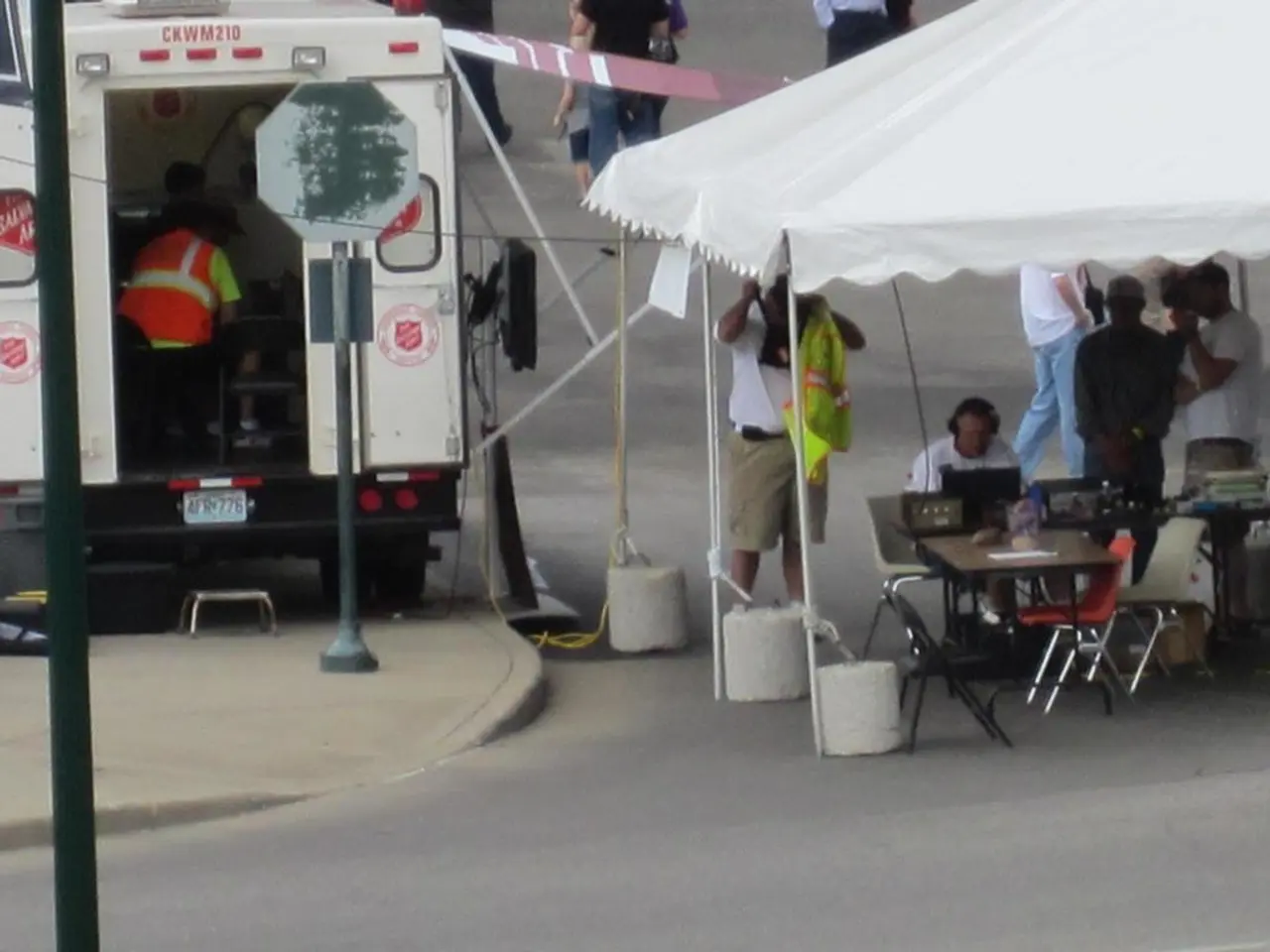Seizure approaching: Appropriate actions
In the world of epilepsy, it's crucial for individuals and their loved ones to be well-informed about safety precautions before and during a seizure. Here's a guide to help you navigate through these challenging situations.
Before a seizure, creating a safe environment is key. Remove or pad sharp or hard objects nearby, secure loose rugs and electrical cords, and ensure essential items are within reach but not likely to cause injury. It's also beneficial to keep a seizure diary to identify triggers and recognise warning signs like auras. Managing stress, maintaining a regular sleep schedule, and taking antiepileptic medications consistently can help reduce seizure risk.
During a seizure, stay calm and do not restrain the person or put anything in their mouth, as they cannot swallow their tongue. Clear the area of dangerous objects to prevent injury and gently roll the person onto their side to keep their airway clear. Time the seizure, and if it lasts longer than five minutes, seek immediate medical help. Remain with the person until they are fully recovered and oriented.
Additional precautions depend on the situation. For example, people with seizures should swim only with supervision, avoid swimming alone, and use flotation devices. Wearing medical alert identification is also recommended. For children, discussing the condition, recognising auras, and keeping a safe environment are important safety steps.
It's essential to be aware of potential seizure triggers. People may experience warning signs such as experiencing odd smells, tastes, or sounds, changes in vision, feeling deja vu, mood changes, numbness, tingling, or pins and needles, and panic or feelings of intense fear. If someone is about to have a seizure, they may move to a safe area, away from objects that may cause injury or any slippery surface.
In some cases, people may use rescue medications to stop a seizure, with benzodiazepines being the most common type of rescue medication for seizures. People can create a seizure action plan with a doctor, detailing seizure first aid and how to respond. It's a good idea for someone to keep any emergency medical information with them, such as a seizure action plan, in a wallet, purse, or phone case.
People should also remove any eyeglasses they are wearing to prevent injury. If those with photosensitive epilepsy have a sudden exposure to flashing lights, completely covering both eyes may help prevent a seizure. These warning signs may occur in the beginning phase of a seizure, known as the prodrome and aura stages.
It's important to note that not all people who have a seizure will experience these initial stages, and in some cases, people may have no warning signs that a seizure is about to occur. If people feel they are about to have a seizure, they can loosen tight clothing around the neck, such as a buttoned collar or tie, to make it easier to breathe if a seizure does occur.
By following these safety precautions, individuals with epilepsy can significantly reduce injury during seizures and improve overall safety and management. It's also important that a person with epilepsy notify their most trusted friends, family, teachers, and colleagues so that they can learn how to recognise a seizure and what to do if one occurs. People may also want to wear a medical bracelet or pendant with emergency information.




